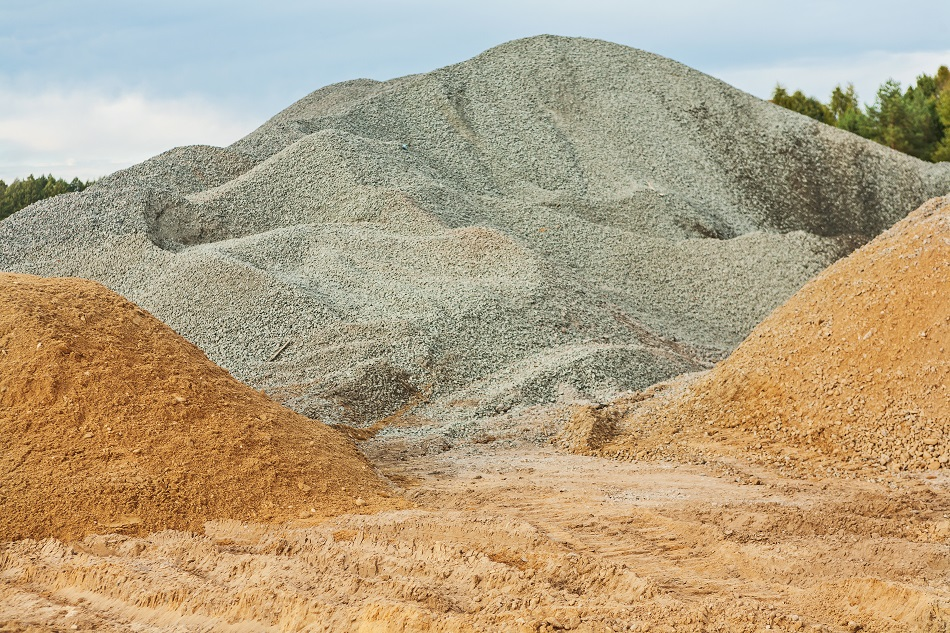
Image Credit: mihalec/Shutterstock.com
Concrete is a material that is ubiquitous with the modern world. Durable, easy to manufacture, cheap, and widely available; it is used in all types of buildings, from small cinderblock housing to apartment blocks, multi-story parking lots, stadia, factories, and power stations.
However, the production of this essential building material is not without its issues: the process of manufacturing concrete on the scale needed produces a lot of carbon dioxide, which contributes to climate change. In fact, concrete production is one of the leading contributors to greenhouse gas emissions: it is estimated that it produces up to 2.8 gigatons of carbon dioxide per year, which is a huge problem.
In recent years researchers have been looking for ways to reduce the environmental impact of the construction sector. Alternative production methods and materials have been considered and researched, but none have come close to replicating the desirable qualities of concrete. However, new material is promising to both curb greenhouse gas emissions and provide an alternative technology for future buildings and construction projects: living concrete.
Technology
This cutting-edge technology utilizes biotechnology to produce a sustainable and durable concrete-like hybrid material. Developed by a team at the University of Colorado Boulder with funding from Darpa, living concrete utilizes a 3D sand-hydrogel scaffold which is inoculated with a photosynthetic cyanobacterium, Synechococcus sp. PCC.
The scaffold provides structural support for the bacterium, whilst the bacterium toughens the hydrogel via the process of calcium carbonate mineralization. Cyanobacteria were identified as ideal candidates for use within the material as they exhibit the ability to survive extremes of temperature, salinity, and humidity.
However, there is a trade-off between mechanical performance and biological viability with the material: the gelatin used in the matrix gains its maximal strength whilst dehydrated but the bacteria typically require humidity to function and thrive. Therefore, a balance between these two factors is optimal, which the research team working on the project hope to achieve by exploring different additives that enhance the bacteria’s tolerance to dry conditions.
Interestingly, as cyanobacteria (the same bacteria responsible for harmful algal blooms) is utilized in the material, it takes on a greenish hue that fades as it dries. Therefore, it can be said that living concrete is truly a “green” material, both in appearance and ecological terms.
Potential Benefits of the Technology
The potential benefits of this new technology are vast. Whilst not intended to completely replace traditional concrete as a building material, it does represent a new frontier in materials science.
Potential exists for the material to have self-replicating qualities: one parent “brick”, when subjected to humidity and temperature switches, can generate new bricks, significantly reducing the amount of material needed for construction of new structures and therefore the environmental impact of the process. The use of environmental switches which can control microbial activity precisely also presents the ability for the material to self-heal, significantly improving safety and reducing the cost of upkeep.
According to the research presented by the team developing the technology, eight new bricks (three successive generations) can be produced from one parent brick which has been split in half and the shape extended with the addition of extra sand and hydrogel scaffolding. This presents opportunities for changing the way we think about current manufacturing processes and the re-use of materials.
Because bacteria are used in the construction of living concrete, possibilities for removing CO2 from the atmosphere also exist, which will provide a potentially game-changing tool in the fight against climate change. As the bacterium used is able to survive extremes of temperature and environment, living concrete is also an attractive prospect for building structures for future space exploration and establishing a human presence in the harsh environment of other planets, where materials may be scarce and its unique properties will be well suited.
Although the technology is still in its infancy, living concrete represents a significant paradigm shift within the construction industry and is showing huge potential for solving many of the problems the construction industry is currently facing.
Sources and Further Reading
Disclaimer: The views expressed here are those of the author expressed in their private capacity and do not necessarily represent the views of AZoM.com Limited T/A AZoNetwork the owner and operator of this website. This disclaimer forms part of the Terms and conditions of use of this website.